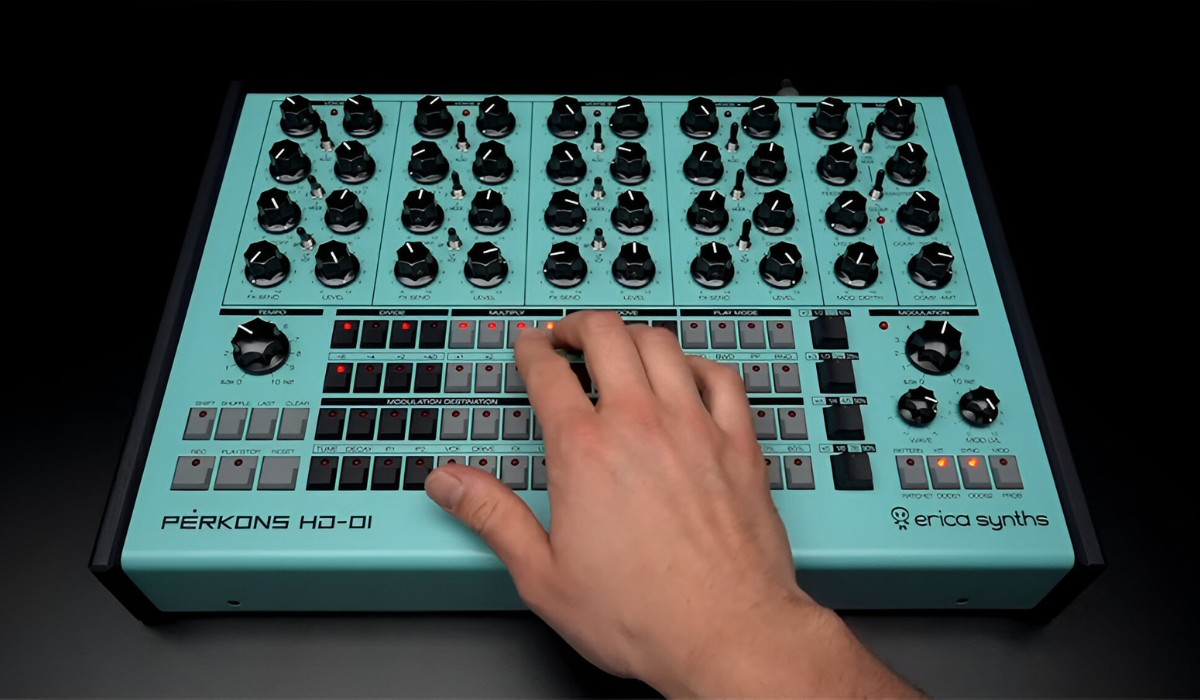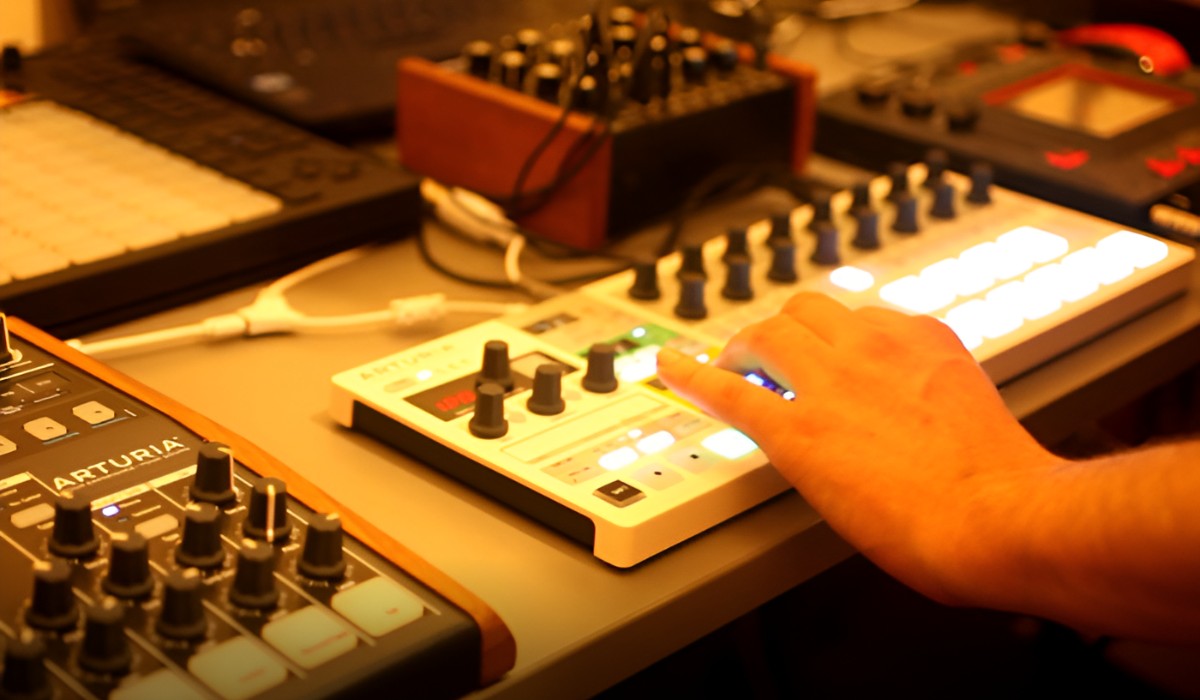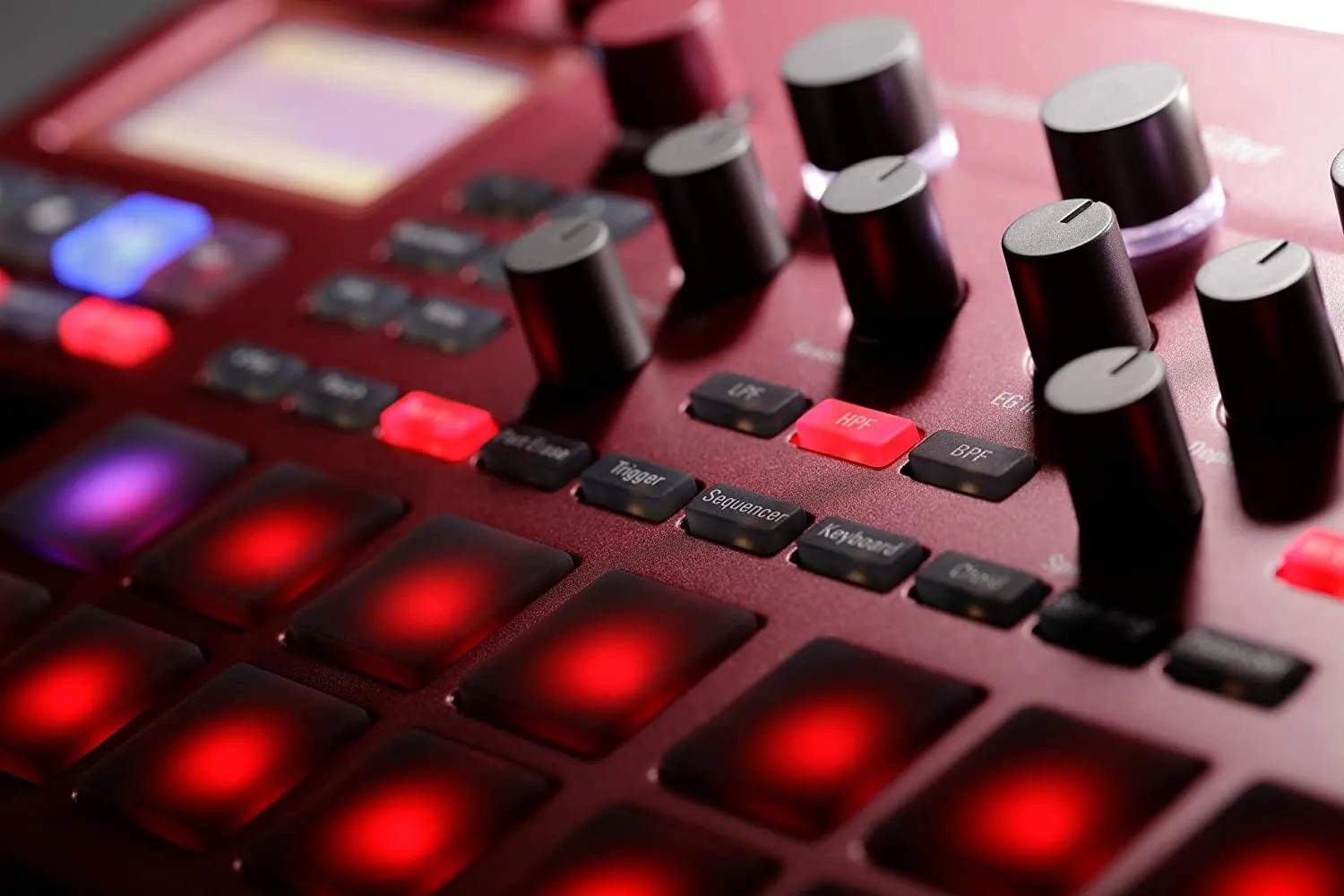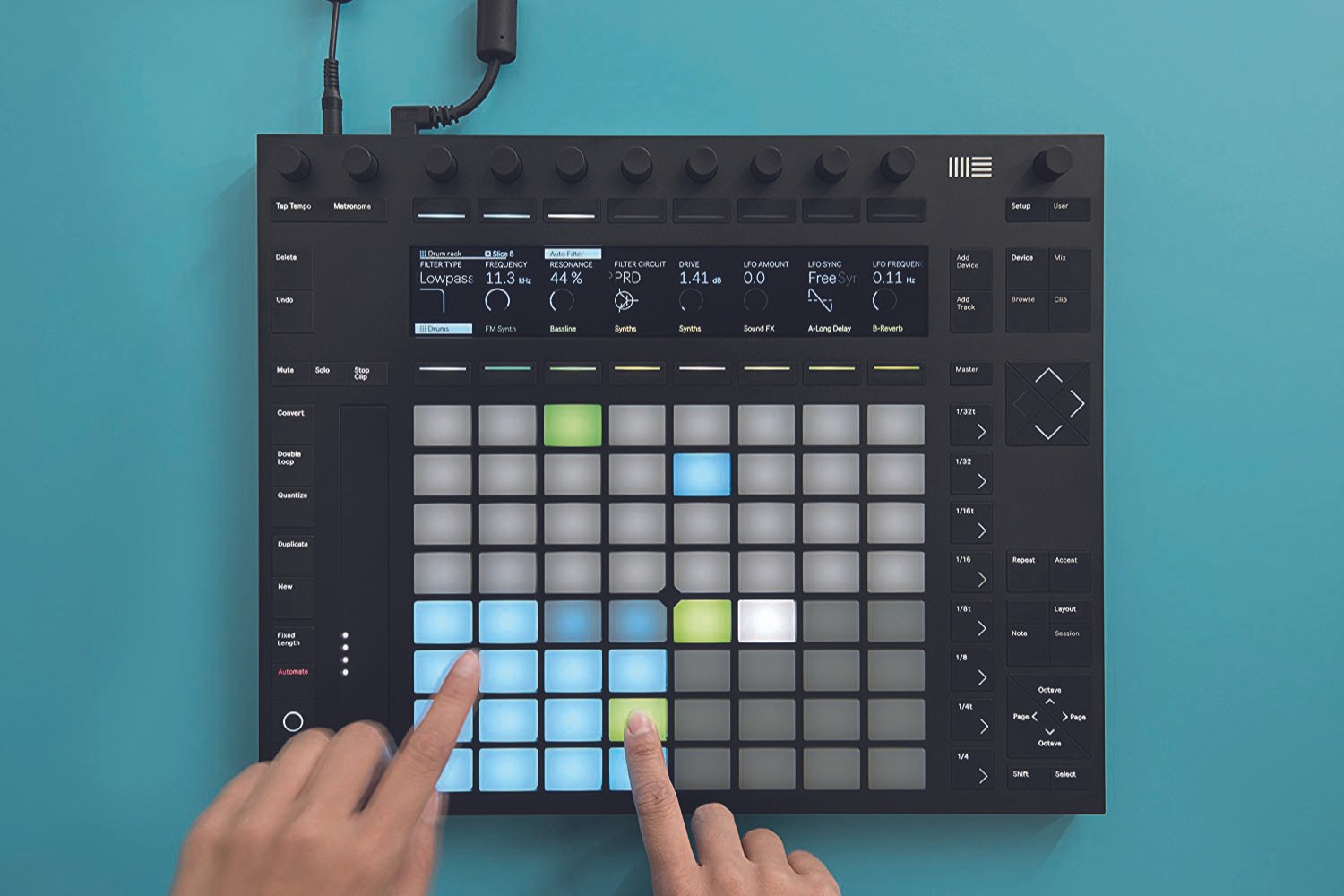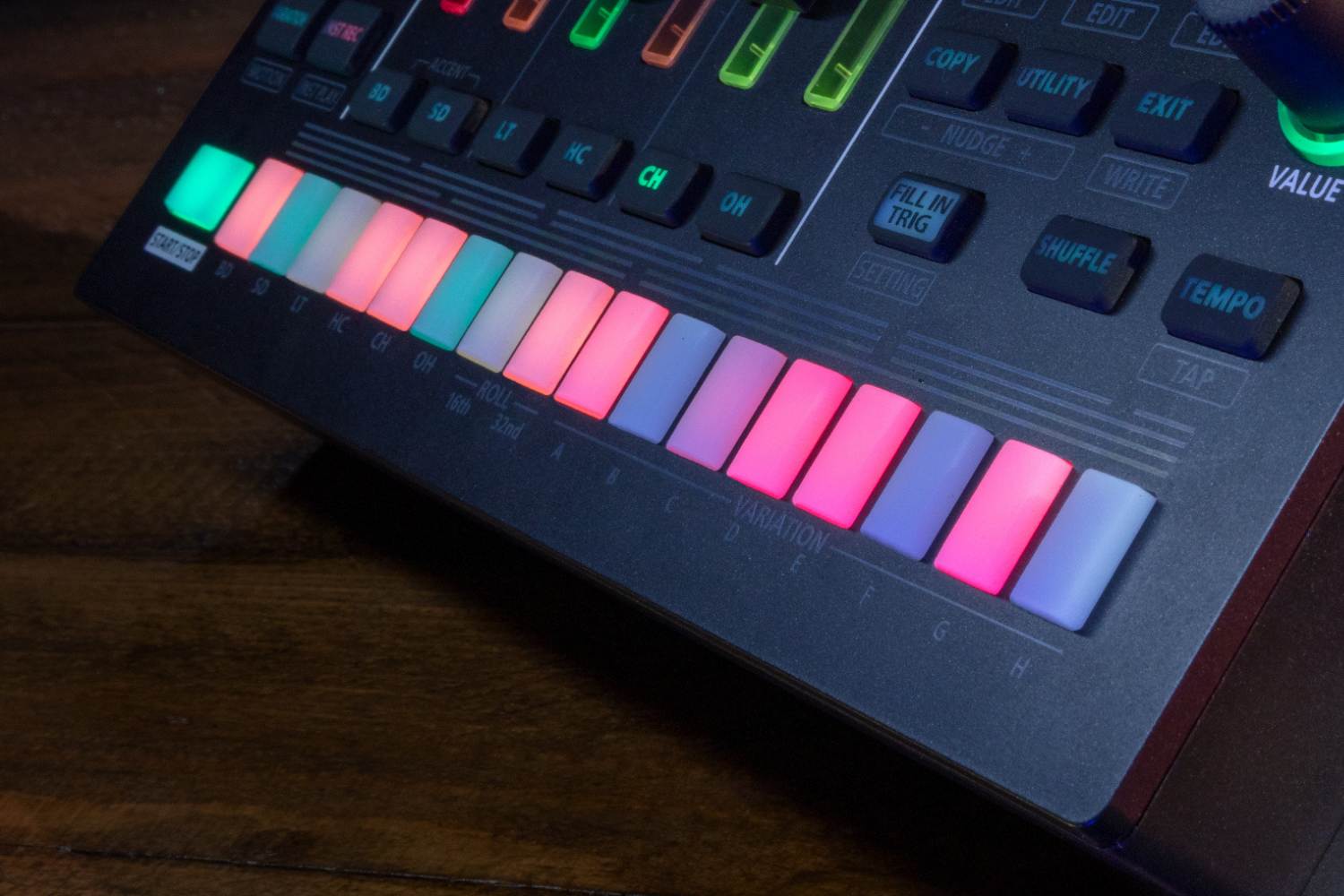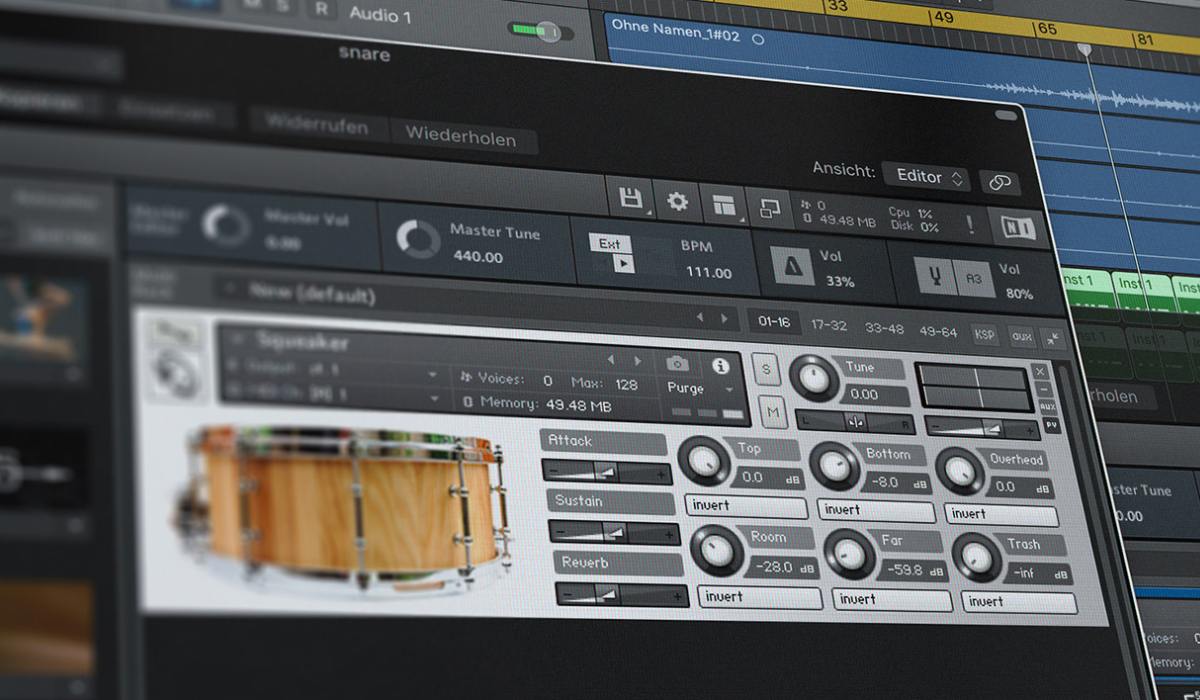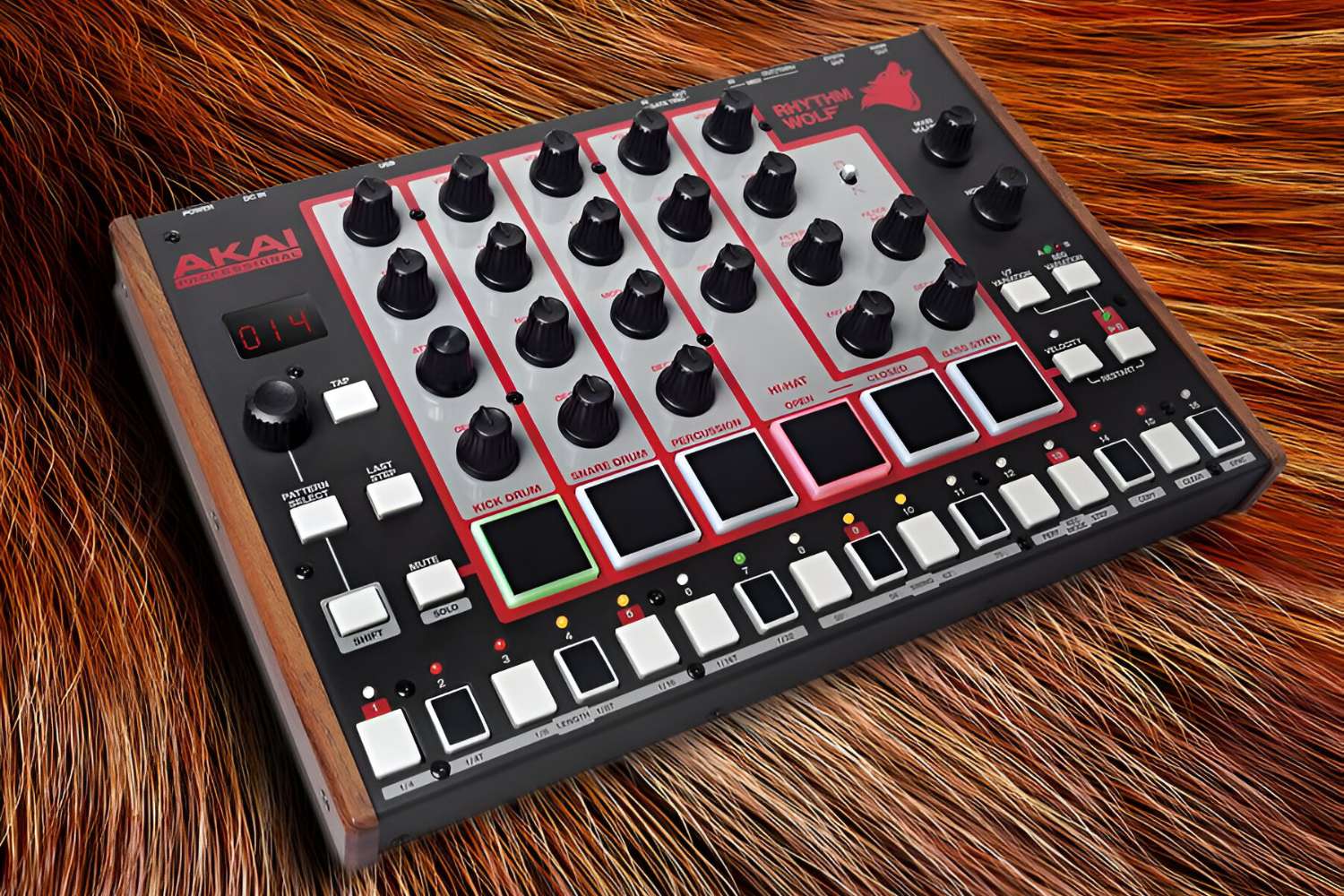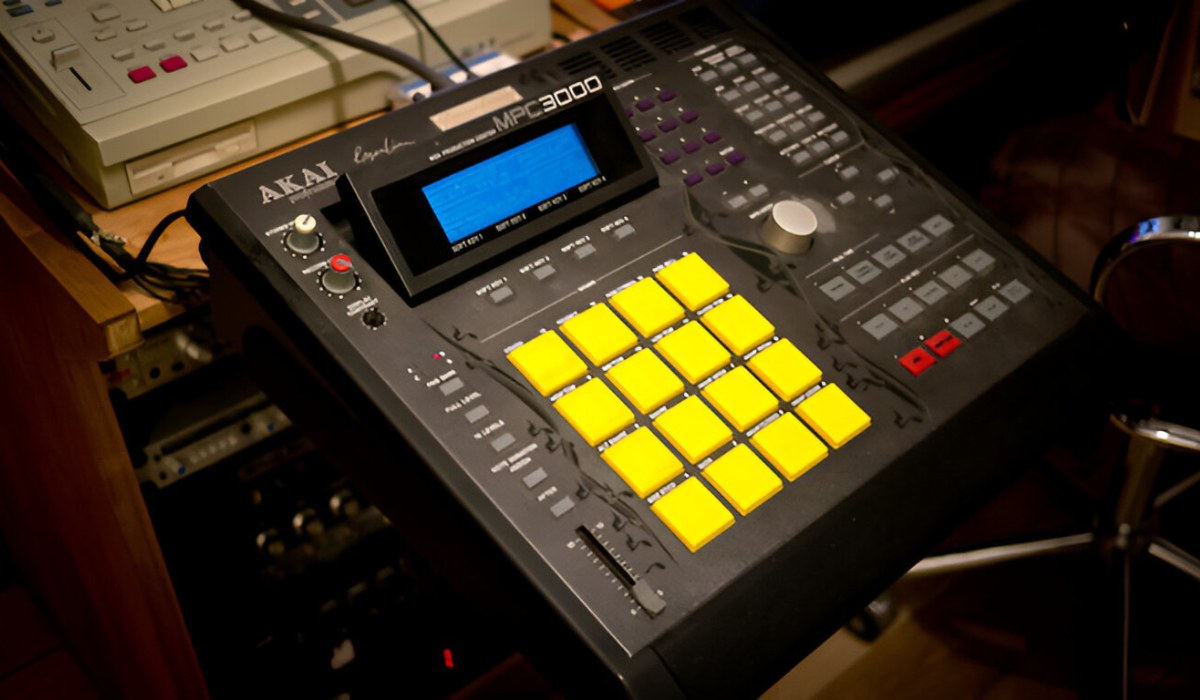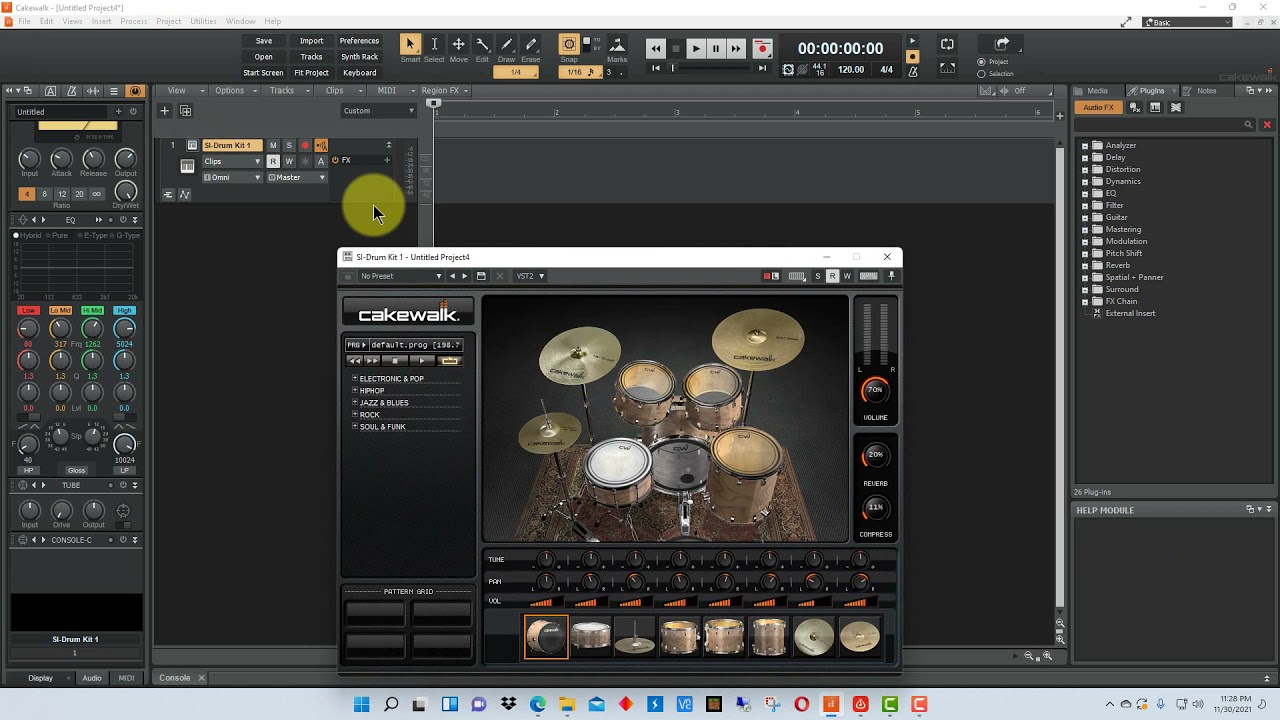Introduction
Creating a compelling salsa beat on a drum machine can infuse your music with infectious Latin rhythms, adding depth and energy to your compositions. Salsa music is characterized by its vibrant syncopated patterns, lively percussion, and infectious grooves, making it a popular genre that inspires movement and joy. Whether you are a seasoned musician or a budding producer, mastering the art of crafting a salsa beat on a drum machine can elevate your music production skills and expand your creative repertoire.
In this comprehensive guide, we will delve into the intricacies of producing an authentic and dynamic salsa beat using a drum machine. From selecting the right drum machine to incorporating Latin percussion and fine-tuning the tempo, each step plays a crucial role in sculpting a captivating salsa rhythm that resonates with the soul. By following these detailed instructions and leveraging the power of modern technology, you can unleash your creativity and embark on a rhythmic journey that pays homage to the rich traditions of salsa music.
Join us as we explore the rhythmic nuances and pulsating cadences that define the essence of salsa music. Through this immersive journey, you will gain valuable insights into the art of crafting a salsa beat on a drum machine, unlocking the potential to infuse your music with the infectious spirit and vitality of this beloved genre. Let's embark on this rhythmic adventure and uncover the secrets to creating an irresistible salsa beat that will captivate listeners and ignite the dance floor.
Choosing the Right Drum Machine
When embarking on the journey of creating a salsa beat, selecting the right drum machine is paramount to achieving an authentic and vibrant sound. The ideal drum machine for crafting salsa rhythms should offer a diverse range of percussion sounds, including congas, bongos, timbales, and other traditional Latin instruments. Additionally, it should provide intuitive controls for adjusting tempo, swing, and accentuation to capture the dynamic essence of salsa music.
Consider opting for a drum machine that features a pattern sequencer, enabling you to program intricate rhythms with ease. Look for models that offer a wide array of preset salsa patterns or the flexibility to create and save your own, empowering you to experiment and innovate within the realm of salsa music production.
Furthermore, the ability to layer and customize percussion sounds is crucial for crafting a rich and authentic salsa beat. Seek a drum machine that allows for individual sound manipulation, such as tuning, decay, and volume control, to sculpt each percussive element to perfection.
It is also beneficial to explore drum machines equipped with MIDI connectivity, as this facilitates seamless integration with external devices and software, expanding your sonic possibilities and streamlining the production process.
Whether you prefer the tactile feel of hardware drum machines or the versatility of software-based solutions, prioritize a drum machine that aligns with your production workflow and musical preferences. By carefully considering these factors, you can ensure that the chosen drum machine becomes an invaluable tool in your quest to craft captivating and authentic salsa beats.
Setting Up Your Drum Machine
Before diving into the intricate process of programming a salsa beat, it is essential to properly set up your drum machine to lay the foundation for a seamless and productive music production session. Begin by connecting your drum machine to a suitable audio interface or mixer, ensuring that the necessary cables are securely linked to guarantee optimal signal flow.
Next, familiarize yourself with the interface and controls of your drum machine, acquainting yourself with the various parameters and functions that will shape your salsa beat. Take the time to explore the percussion sounds and patterns available, paying close attention to the nuances of each instrument to discern their unique timbres and characteristics.
Adjust the tempo and time signature on your drum machine to align with the rhythmic structure of salsa music, typically characterized by lively tempos and spirited grooves. Additionally, consider enabling swing or shuffle settings to introduce subtle rhythmic variations that emulate the organic feel of live percussion, infusing your salsa beat with an irresistible sense of movement and vitality.
Once the fundamental settings are configured, explore the pattern sequencing capabilities of your drum machine, experimenting with different rhythm arrangements and variations to lay the groundwork for your salsa beat. Take advantage of the pattern chaining feature if available, allowing you to seamlessly transition between different sections of your composition and craft dynamic arrangements that captivate the listener.
As you delve into the realm of salsa beat production, it is crucial to maintain an organized and intuitive workflow. Familiarize yourself with the pattern storage and recall functions of your drum machine, ensuring that you can effortlessly save and retrieve your rhythmic creations for future refinement and expansion.
By meticulously setting up your drum machine and acquainting yourself with its capabilities, you can establish a solid foundation for crafting compelling and authentic salsa beats, setting the stage for a creative journey filled with rhythmic exploration and musical innovation.
Creating the Basic Rhythm
Embarking on the creation of a compelling salsa beat requires a meticulous approach to crafting the fundamental rhythm that forms the backbone of the composition. Begin by selecting a classic salsa pattern on your drum machine, typically characterized by the interplay of congas, bongos, and other traditional Latin percussion instruments. These foundational rhythms often feature a distinctive clave pattern, a syncopated motif that underpins the infectious groove of salsa music.
As you delve into programming the basic rhythm, pay close attention to the dynamics and accents of each percussive element, aiming to emulate the organic interplay of live percussionists. Experiment with the timing and velocity of individual hits, infusing the rhythm with subtle variations and nuances that evoke the spirited energy of authentic salsa performances.
Consider incorporating syncopated hi-hat or shaker patterns to enhance the rhythmic complexity and drive of the salsa beat, adding layers of texture and momentum to the composition. These auxiliary percussion elements contribute to the dynamic tapestry of the rhythm, infusing it with an irresistible sense of movement and vitality.
Furthermore, explore the potential of polyrhythmic interplay within the basic rhythm, intertwining complementary percussion patterns to create a cohesive and engaging rhythmic tapestry. By layering diverse rhythmic elements, you can craft a salsa beat that captivates the listener with its intricate interplay and infectious cadence.
Throughout the process of creating the basic rhythm, remain open to experimentation and iteration, allowing the rhythm to evolve organically as you explore different permutations and variations. Embrace the creative freedom afforded by the drum machine, leveraging its intuitive controls and sequencing capabilities to sculpt a captivating salsa rhythm that pulsates with the vibrant spirit of Latin music.
By meticulously crafting the basic rhythm, you lay the groundwork for a compelling and authentic salsa beat that serves as the rhythmic heartbeat of your musical composition, paving the way for further embellishment and refinement as you venture deeper into the realm of salsa music production.
Adding Variation and Fills
Infusing your salsa beat with dynamic variation and expressive fills is essential to creating a captivating and engaging rhythmic tapestry that captivates the listener. By introducing subtle rhythmic nuances and embellishments, you can elevate the energy and momentum of the composition, imbuing it with an irresistible sense of movement and vitality.
One effective approach to adding variation is to incorporate subtle changes in the percussion patterns, introducing variations in the timing, accentuation, and instrumentation to create engaging rhythmic shifts. Experiment with altering the placement of percussive hits within the pattern, introducing syncopated accents and offbeat embellishments to inject a sense of unpredictability and excitement into the salsa beat.
Furthermore, integrating expressive fills and flourishes within the rhythm can enhance the dynamic ebb and flow of the composition, providing moments of heightened intensity and rhythmic flair. Utilize the capabilities of your drum machine to program and sequence impactful fills, drawing inspiration from the improvisational nature of live percussion performances to infuse the salsa beat with a sense of spontaneity and creativity.
Consider incorporating drum fills that emulate the spirited improvisational techniques of traditional Latin percussionists, such as cascara patterns on the timbales or rapid roll flourishes on the congas, adding a touch of virtuosity and excitement to the rhythm. These expressive fills serve as rhythmic exclamation points, punctuating the salsa beat with moments of fervent energy and rhythmic dynamism.
Additionally, exploring the use of accentuated hits and breaks within the rhythm can further enhance the rhythmic impact of the salsa beat, creating dramatic pauses and emphatic accents that command attention and invite movement. By strategically integrating these rhythmic devices, you can shape the ebb and flow of the composition, guiding the listener through a dynamic and immersive rhythmic journey.
Through the artful incorporation of variation and fills, you breathe life into your salsa beat, infusing it with a sense of spontaneity, creativity, and rhythmic vitality that captivates the listener and ignites the dance floor with infectious energy.
Incorporating Latin Percussion
Integrating traditional Latin percussion instruments into your salsa beat is pivotal to capturing the authentic essence and rhythmic vitality of the genre. The vibrant and diverse array of Latin percussion, including congas, bongos, timbales, cowbells, and guiro, adds depth and complexity to the rhythm, infusing it with the infectious spirit of salsa music.
Begin by selecting the appropriate percussion sounds on your drum machine, ensuring that each instrument accurately emulates the timbre and character of its acoustic counterpart. Pay careful attention to the tonal qualities and articulations of the percussion samples, aiming to evoke the rich textures and expressive nuances of traditional Latin instruments.
As you delve into the process of incorporating Latin percussion, consider the interplay and rhythmic synergy between the different instruments. Emulate the dynamic conversations and polyrhythmic textures that define traditional Latin ensembles, allowing each percussion instrument to weave seamlessly into the rhythmic tapestry, creating a cohesive and immersive sonic experience.
Explore the expressive potential of individual percussion instruments, leveraging the nuanced controls of your drum machine to manipulate parameters such as pitch, decay, and resonance to sculpt the tonal and textural characteristics of each sound. By harnessing these sonic possibilities, you can infuse your salsa beat with a rich and diverse palette of percussive colors, adding depth and dimension to the rhythm.
Furthermore, consider incorporating traditional rhythmic patterns and motifs associated with Latin percussion instruments, such as the cascara pattern on the timbales or the tumbao rhythm on the congas. These iconic rhythmic motifs serve as foundational elements that anchor the salsa beat, infusing it with the rhythmic authenticity and cultural heritage of Latin music.
By thoughtfully integrating Latin percussion into your salsa beat, you honor the traditions and heritage of the genre, while also infusing your composition with a vibrant and dynamic rhythmic palette that resonates with the infectious spirit and vitality of salsa music.
Adjusting Tempo and Swing
The tempo and swing of a salsa beat play a pivotal role in shaping the rhythmic feel and energy of the composition, exerting a profound influence on the danceability and expressive dynamics of the music. As you embark on the production journey, it is essential to carefully consider and adjust the tempo and swing settings to capture the spirited essence of salsa music.
When setting the tempo for your salsa beat, aim to strike a balance between liveliness and groove, typically ranging between 150 to 250 beats per minute (BPM). This spirited tempo infuses the music with an infectious energy that compels movement and embodies the vibrant spirit of salsa, inviting listeners to immerse themselves in the rhythmic cadence and dynamic pulse of the composition.
Furthermore, exploring swing or shuffle settings on your drum machine can introduce subtle rhythmic variations that emulate the organic feel of live percussion, infusing the salsa beat with a sense of fluidity and groove. Adjusting the swing parameter imparts a lilt and bounce to the rhythm, enhancing its infectious appeal and imbuing it with a captivating sense of movement and vitality.
As you fine-tune the tempo and swing of your salsa beat, consider the interplay between these elements and their impact on the overall feel of the composition. Experiment with different tempo and swing configurations to discover the optimal rhythmic balance that propels the music forward while maintaining a compelling sense of rhythmic buoyancy and flow.
Additionally, remain attuned to the danceability and kinetic energy of the salsa beat, ensuring that the tempo and swing settings align with the rhythmic traditions and cultural heritage of salsa music. By sensitively adjusting these parameters, you can harness the power of tempo and swing to evoke the spirited essence of salsa, inviting listeners to engage with the music on a visceral and rhythmic level.
By thoughtfully adjusting the tempo and swing of your salsa beat, you imbue the composition with a dynamic and infectious rhythmic vitality that embodies the spirited essence of salsa music, inviting listeners to revel in its rhythmic cadence and embrace the joyous energy of the genre.
Finalizing Your Salsa Beat
As you approach the culmination of the salsa beat production process, it is essential to devote attention to refining and perfecting the rhythmic tapestry, ensuring that it embodies the vibrant spirit and infectious energy characteristic of salsa music. Finalizing your salsa beat involves meticulous attention to detail and a commitment to capturing the rhythmic essence that defines the genre.
Take the time to critically evaluate the interplay of percussion elements within the rhythm, refining the dynamics, accents, and rhythmic variations to create a cohesive and engaging rhythmic foundation. Fine-tune the timing and velocity of individual hits, ensuring that each percussive element contributes to the dynamic ebb and flow of the salsa beat, inviting movement and captivating the listener with its infectious cadence.
Consider incorporating subtle textural enhancements, such as reverb and delay effects, to imbue the percussion sounds with a sense of space and depth, elevating the sonic presence of the rhythm and adding a touch of atmospheric allure to the composition. These sonic embellishments contribute to the immersive and captivating nature of the salsa beat, enhancing its sonic impact and rhythmic allure.
Furthermore, pay close attention to the overall balance and mix of the percussion elements, ensuring that each instrument occupies its sonic space within the rhythmic landscape without overshadowing the others. Achieving a harmonious and balanced mix allows the rhythmic intricacies of the salsa beat to shine through, creating a captivating and immersive sonic experience that resonates with the listener.
As a final touch, consider incorporating subtle rhythmic variations and fills to infuse the salsa beat with moments of expressive flair and dynamic intensity, adding an element of spontaneity and creativity that captivates the listener and ignites the rhythmic energy of the composition.
By meticulously attending to these details and infusing your salsa beat with a sense of rhythmic vitality and dynamic allure, you can finalize the composition with confidence, knowing that it embodies the spirited essence and infectious energy of salsa music. Embrace the creative journey and revel in the rhythmic tapestry that you have meticulously crafted, inviting listeners to immerse themselves in the captivating and joyous spirit of salsa music.







